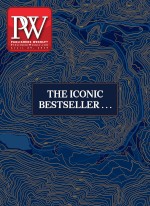Modern health care and scientific research have transformed the way society views aging. PW asked the authors of two forthcoming books—Louise Aronson, author of Elderhood (Bloomsbury, June), and David Sinclair, author of Lifespan (Atria, Sept.)—to respond separately to the same questions about how the medical community and the public address growing older.
What do you think of the prevailing American attitude that aging is a disease to be cured?
David Sinclair: In the book, I make the case that aging should be considered a disease. Today, using whack-a-mole medicine, we treat one disease at a time. In the long run, it doesn’t help a great deal. The U.S. spends hundreds of billions of dollars each year fighting cardiovascular disease. But if we could stop all cardiovascular disease today, we wouldn’t add many years to the average lifespan. The gain would be just 1.5 years. The same is true for cancer. That would give us just 2.1 more years of life on average because all other causes of death still increase exponentially. We’re still aging, after all.
Louise Aronson: Viewing aging as pathological is both accurate and flawed, constructive and problematic. The possibility of maintaining physical function as we age has obvious appeal. Rather than targeting ailments one at a time, as we do now, researchers are developing agents that lower the risk of many diseases as well as age-related conditions, including frailty. Although that may sound like progress, it brings us to the ways in which viewing aging as a disease is problematic. Aging is a universal phenomenon that gives life shape, direction, urgency, and meaning. Perhaps the most immediately worrisome consequence of the age-as-disease perspective is that it turns us all into disorders by our 50s.
What, to your mind, is the most constructive way to view the aging process?
L.A.: As an expected, natural, and defining part of life with opportunities and disappointments like all other life stages. The best part of this view—in addition to its historical and biological accuracy—is that it means we as individuals and as a society can make aging better or worse, easier or harder, through our choices, priorities, and policies.
D.S.: Aging is just like any deterioration of the body. It fulfills every category of what we call a disease except one: it impacts more than half the population. According to The Merck Manual of Geriatrics, a malady that impacts less than half the population is a disease. But aging, of course, impacts everyone. The manual therefore calls aging an “inevitable, irreversible decline in organ function that occurs over time even in the absence of injury, illness, environmental risks, or poor lifestyle choices.” We once thought of cancer as an incurable disease; then we started treating it. Can you imagine saying that cancer is inevitable and irreversible? We still say that about aging.
What’s an example of a recent innovation that has changed, or will change, the way that society approaches aging?
D.S.: In 2018, the World Health Organization released the 11th edition of the International Classification of Diseases, which, under code MG2A, defines “old age without mention of psychosis” as a disease. Every country in the entire world is encouraged to start reporting using the 11th edition on Jan. 1, 2022. Practically, what this means is that countries will have to report to the WHO their statistics on who dies from aging as a condition. It might one day be possible to be diagnosed with a condition called “old age.” Will this lead to changes at the regulatory level, directing billions of dollars in investment to develop the medicines we deserve? Will federal regulators and doctors finally accept that it is ethically okay to prescribe medicines to slow aging and all the diseases that aging causes? We will see.
L.A.: The National Institutes of Health’s new Inclusion Across the Lifespan policy requires researchers to include people of all relevant ages in their studies. It’s revolutionary. Currently, even when a disease primarily affects old people, it is studied primarily in younger people. When things don’t go well, people say, “What do you expect? She, or he, was old.” And then we use those bad outcomes to justify not including elders in trials, and the vicious cycle of socially constructed negative old age continues. Sometimes—actually, when it comes to old age, more often than not—the quietest changes make the biggest impact.



 Volume 266
Issue 17
04/29/2019
Volume 266
Issue 17
04/29/2019





